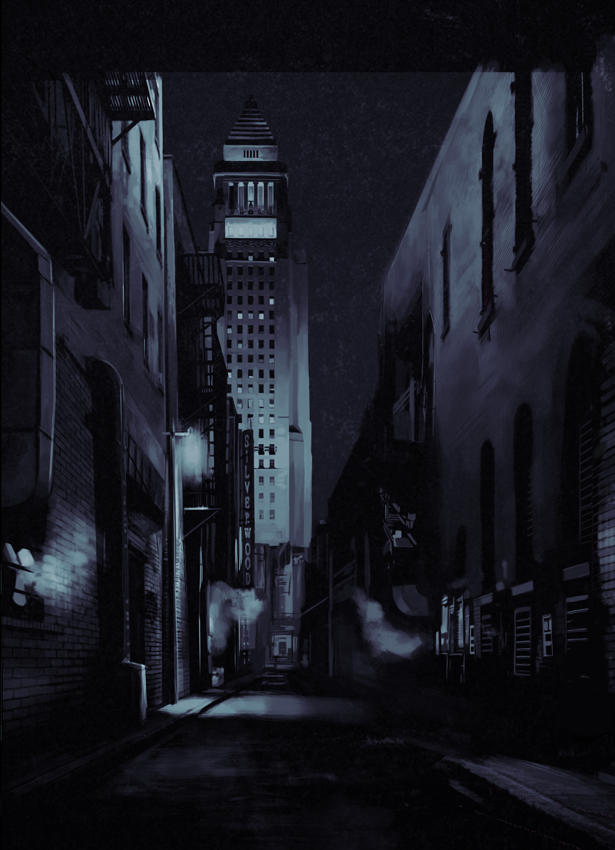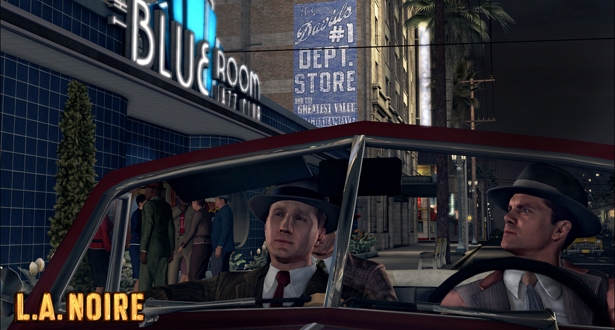"It was about 11am, mid-July, with the sun shining and the thick cloying smog obscuring the LA foothills. I was wearing my brown pin-striped suit, with white shirt, dark red tie, black brogues, black wool socks with dark blue clocks on them. I was neat, clean, shaved and sober, and I didn’t care who knew it. I was everything the well-dressed homicide cop should be.”
The words of Cole Phelps, fed through the typewriter of Raymond Chandler and spat back out like a cheap whiskey at a country club (and don’t worry, that’s the last sub-Chandler flourish we’ll crowbar in). Phelps is a very important man -— a beat cop whose potential was quickly recognised by his superiors, who rushed him through the ranks of the LAPD — a central figure in the investigation into a deluge of grisly murders in the Forties. And, as the star of Rockstar Games’ latest masterpiece LA Noire, about to take his place in the pantheon of video-game icons.
It’s a trick Rockstar has pulled off before. In October 2001 it released crime epic Grand Theft Auto III, the sequel to a series of 2D crime games that were only remarkable for a modicum of controversy, most likely self-generated to whip up some free publicity. It was a revelation.
You were dropped in a 3D city and left to your own devices. The freedom was unprecedented in an action game at the time. If you wanted to follow the scripted plot and take revenge on the ex-girlfriend who betrayed you and left you for dead, that was fine. Equally, you could just take a job driving a cab. Or steal one to mow down pedestrians. It spawned True Crime, countless other imitators and ever-improving sequels, and was the catalyst for the franchise racking up more than 124 million sales.

BREAKING THE MOULD
Ten years on, the scene is set for Rockstar to do it again. Los Angeles, as it was in the Forties, has been painstakingly digitally recreated with much assistance from UCLA’s Spence Air Photos collection: a vast archive of 110,000 negatives taken over five decades and donated to the university in the Seventies by photographer Robert Spence, who was hired by LA’s wealthiest to take aerial snaps of their mansions.
But that’s not the game-changer. That’s not the reason the specialist magazines have been squaring up against each other to praise it (“Groundbreaking” gushed 360; “Completely awe-inspiring” countered Play). Impressive as the reconstructed City Of Angels is, building a virtual city to inspire assorted “oohs” and “aahs” is relatively easy for the experts. No, the superlatives are for MotionScan: a facial-expression capturing system so advanced, so realistic and so jaw-to-the-floor impressive that LA Noire was part of the Official Selection at the 2011 Tribeca Film Festival. That’s right: film festival. It’s the first game ever to be honoured in such a way.
The process involves real actors, surrounded by 32 high-definition cameras recording at a rate of 1,000 frames per second, which allows them to capture every nuance in the actors’ faces as they say their lines. There are no motion tracking dots attached (banish any recollections you have of Ray Winstone’s head being peppered with them while filming Beowulf). They capture every aspect of the performance and it’s then imported straight into the game.
So why is MotionScan such a big deal? Official Xbox Magazine’s editor Jon Hicks explains: “It’s by far the most realistic conversation you’ve ever had in a video game. And it shows all other games up as just being a mouth flapping out of sync with the dialogue.”
But graphical leaps forward are nothing new — especially as we’ve witnessed the jump from standard definition to HD in the past five years. The vital thing about LA Noire is about how this is implemented in the gameplay. Phelps is a detective. He has to search for clues, follow leads and interrogate people. Or rather, as the player, you have to. And interrogating a character with a fixed facial expression, as their mouth flaps out of sync, is a pointless exercise in guesswork.
“The MotionScan technology works really well because of its fidelity,” says Hicks. Animated or not, the people you’re speaking to look and move like they’re real. “When you ask someone a question, it forces you to study them as they answer. Are they being shifty? If your answer’s ‘Yes’, then it’s likely they’re lying. Now, do you have the evidence to prove it?”
Something as revolutionary as this doesn’t happen quickly. The production company making the game for Rockstar, Team Bondi, was founded in 2003. LA Noire is its first release. Eight years in the making is a large chunk of founder Brendan McNamara’s life. “Most games try to avoid human interaction, but for LA Noire it’s essential,” he explains. “We had to build the tech from scratch. Even back in 2006 when we were scanning people
in the office and getting them to stick out their tongues, we were pleased with how real it looked. But it’s now at the stage where it’s not interpretation any more — you’re seeing what the actors actually did.”
It’s not an easy (or cheap) process. The nature of it being used for a game with multiple possible routes through it means that there’s a lot of work for the actors to do. And the writers, too. “You need three times as much script,” reveals McNamara.
The acting is essentially split into two parts. First comes the full-body motion capture, which involves the Lycra suits you’re no doubt familiar with. Next is the all-important MotionScan, which captures just the face.
“Aaron Staton [Ken Cosgrove in Mad Men], who plays Phelps, spent 70 days in the chair,” McNamara tells us. “He would typically come in early in the morning, go into make-up around 7am and then finish at 1pm. I’d then work with the other actors in the afternoon.”

WORLD DOMINATION BECKONS
MotionScan’s debut in a video game is one thing; the real test is whether it will take off in other mediums, or fade like Betamax to motion capture’s VHS. Actor John Noble, who plays property developer Leland Monroe in the game, is convinced that it’s the start of something big. “I felt I was coming in at the birth of something,” he says. “No question it’s going to be a major part of entertainment. A lot of actors are worried about animation taking over the world. But what this shows is that you’re still going to have to act; they’ll just put it in a different form. I’ve had this argument with actors who think we’ll all be out of work in 15 years. I just don’t believe that. There’ll always need to be the human aspect in there, and MotionScan supports that argument so strongly.”
And an even stronger suggestion of its potential comes from the man who’s really in the know. “There are other companies already using it,” reveals Team Bondi’s McNamara. “And I hope there will be even more when people have played the game. We’re also talking to lots of film people. But I can’t say too much about that.” And then there’s the next step, which is full-body MotionScan. “At the moment we capture 1GB of data per second. Full-body takes a lot more. We’re working on it, but it’s a couple of years away.”
While you’re waiting for that, there is, of course, LA Noire to be getting your teeth into. A game with the impact of a Colt .38 at close range. And this time, that really is our final stab at a Chandler-esque flourish.
LA Noire is released on 20 May on PS3 and Xbox 360
Written by @JonnyPile










